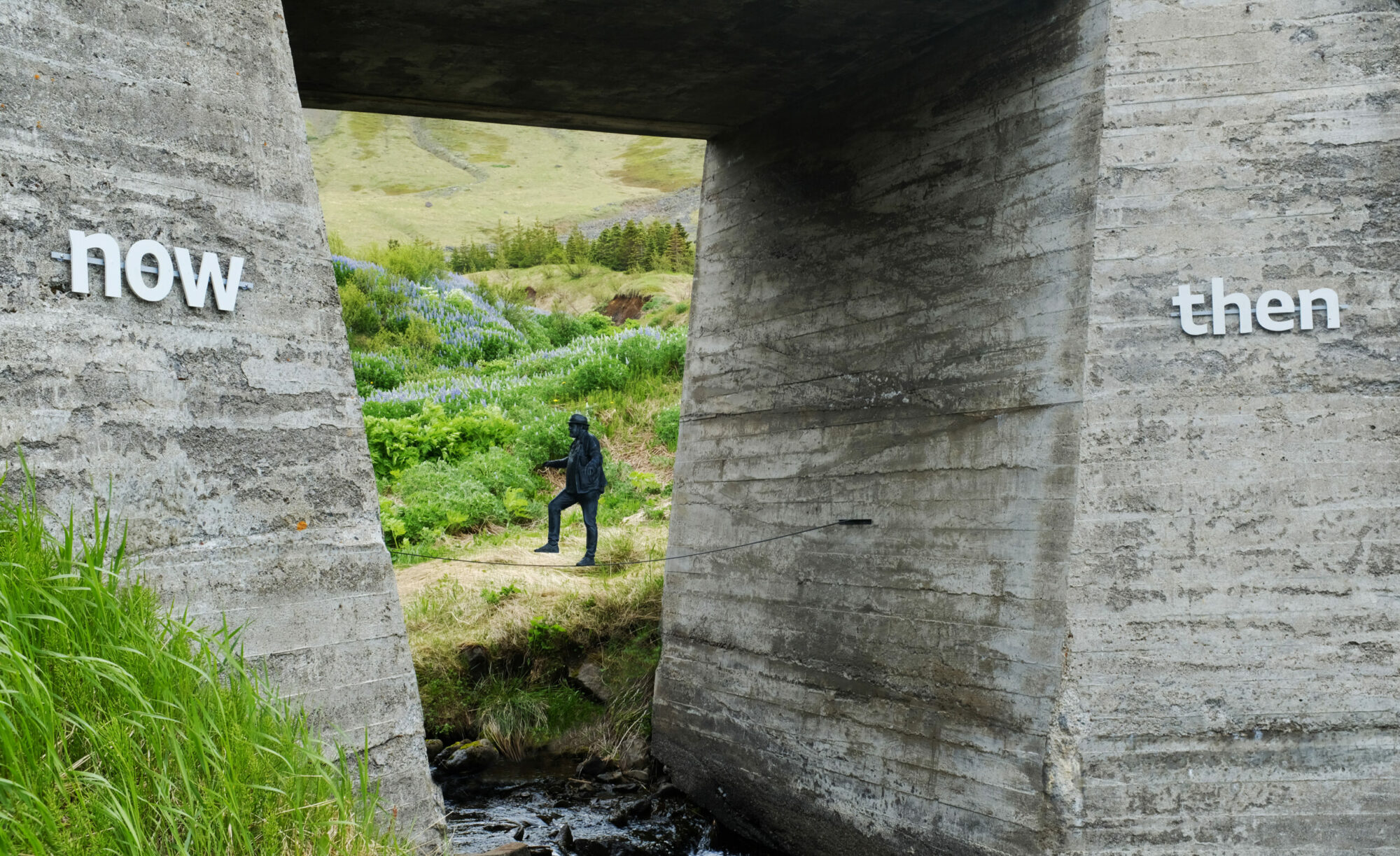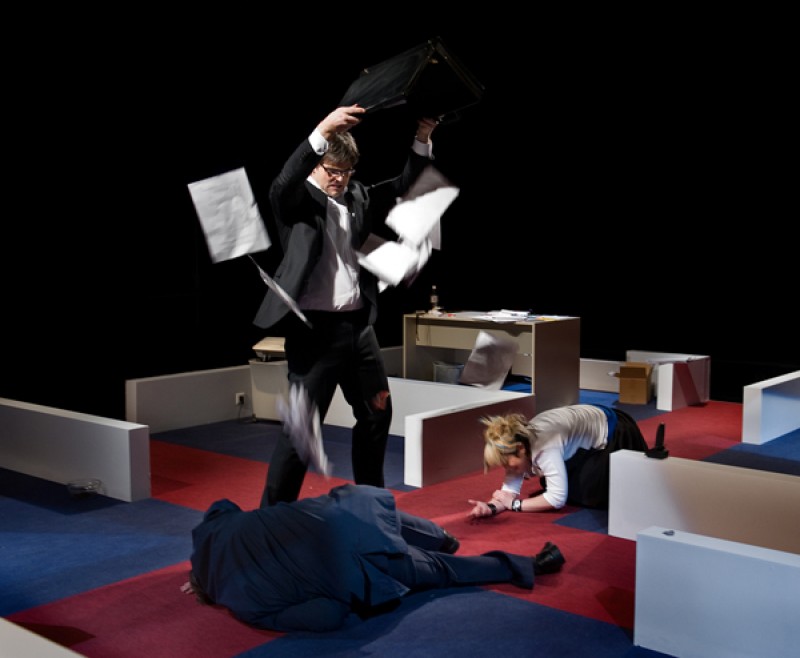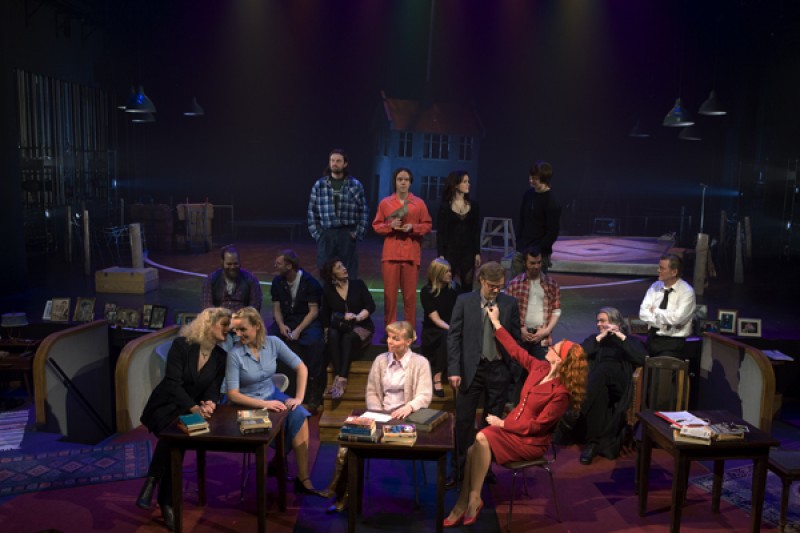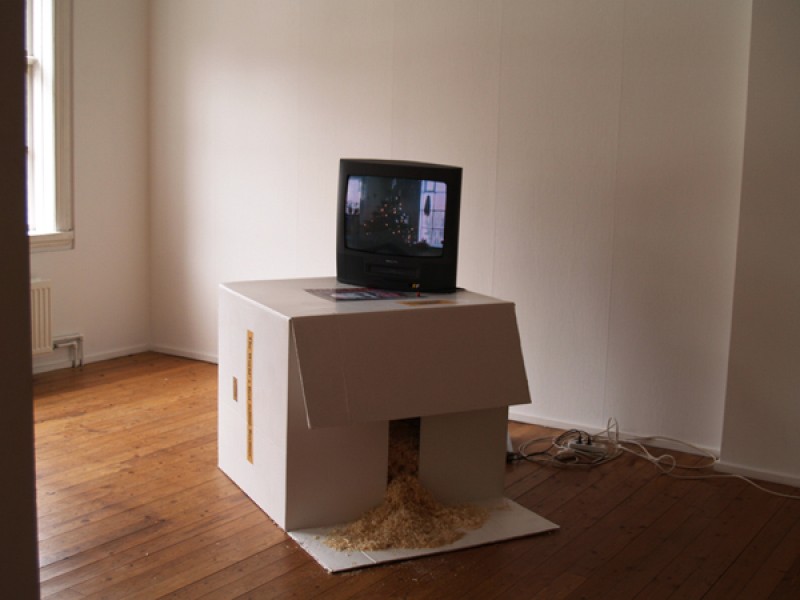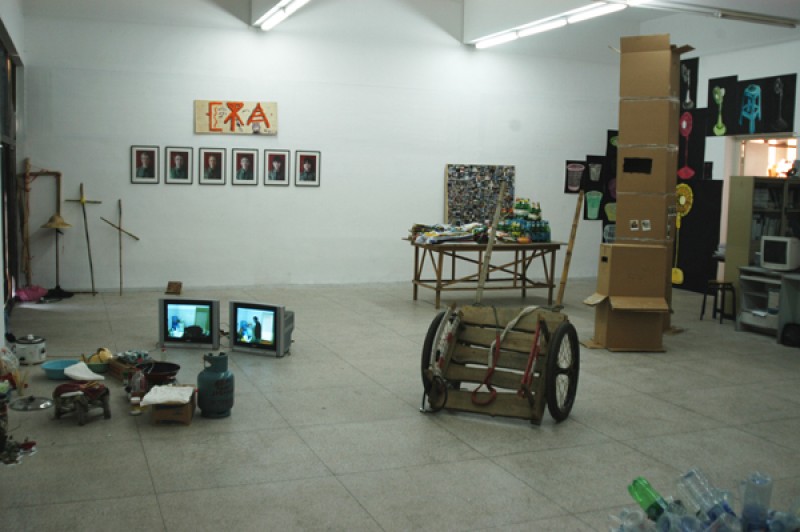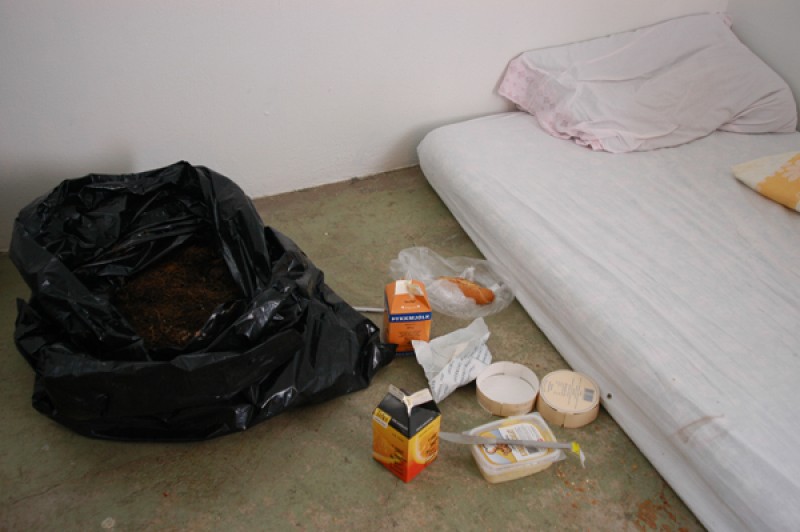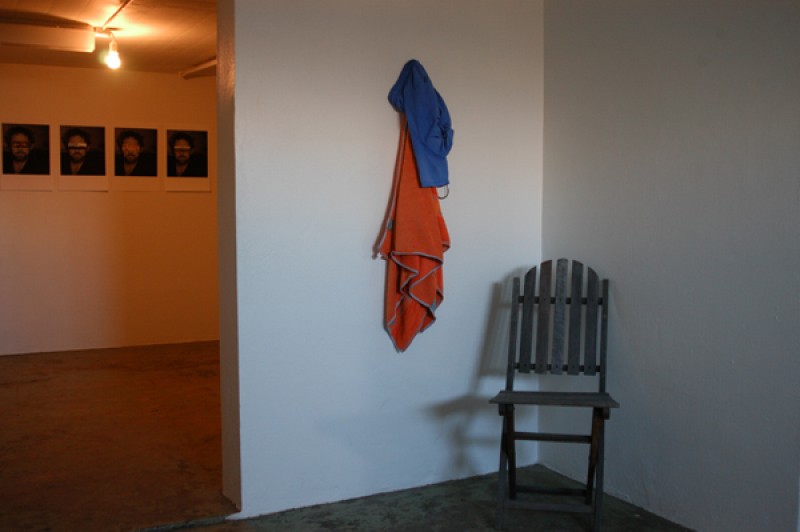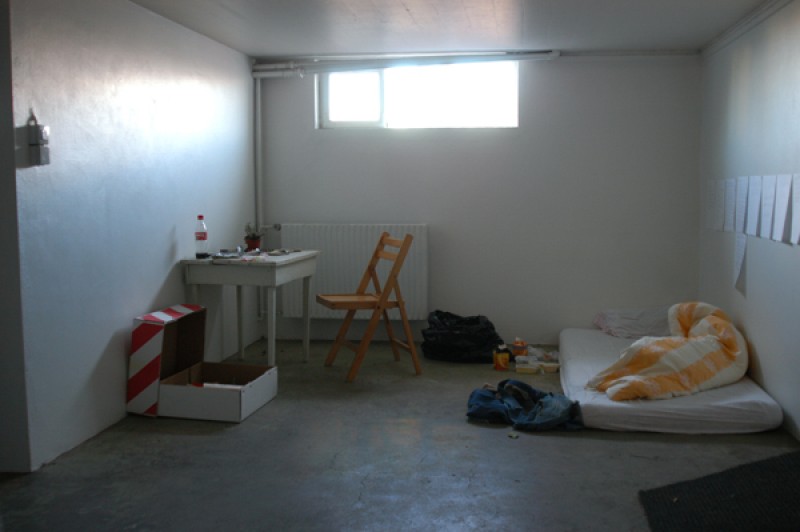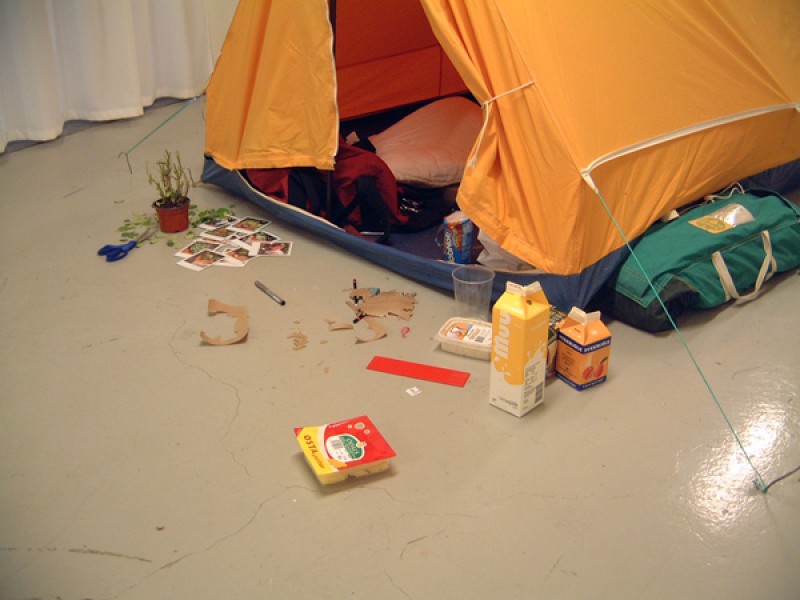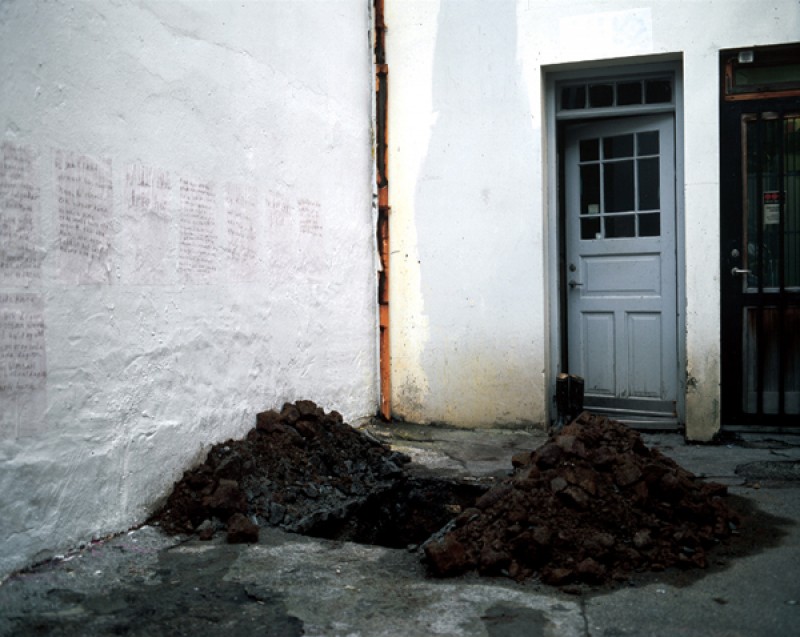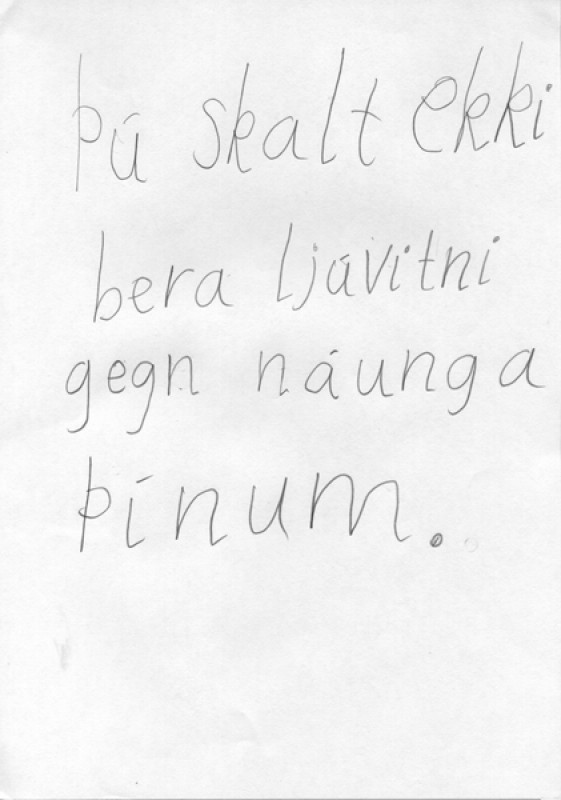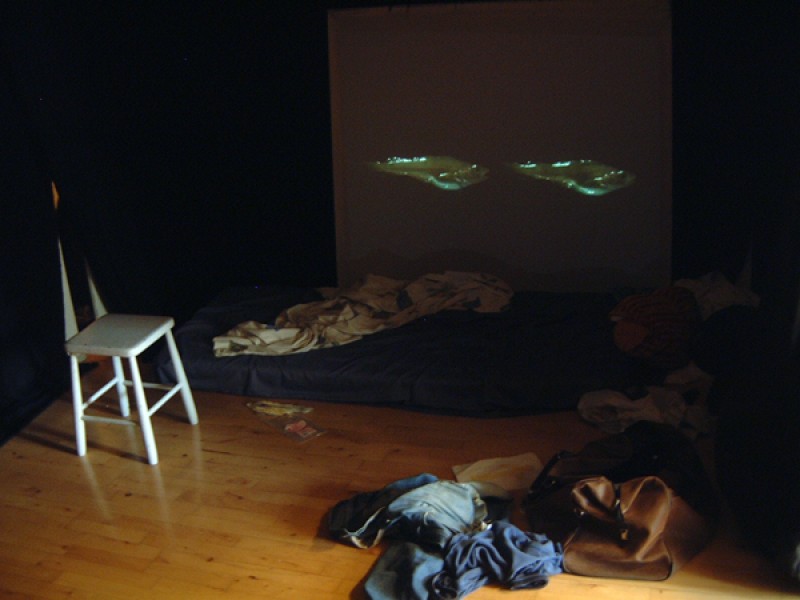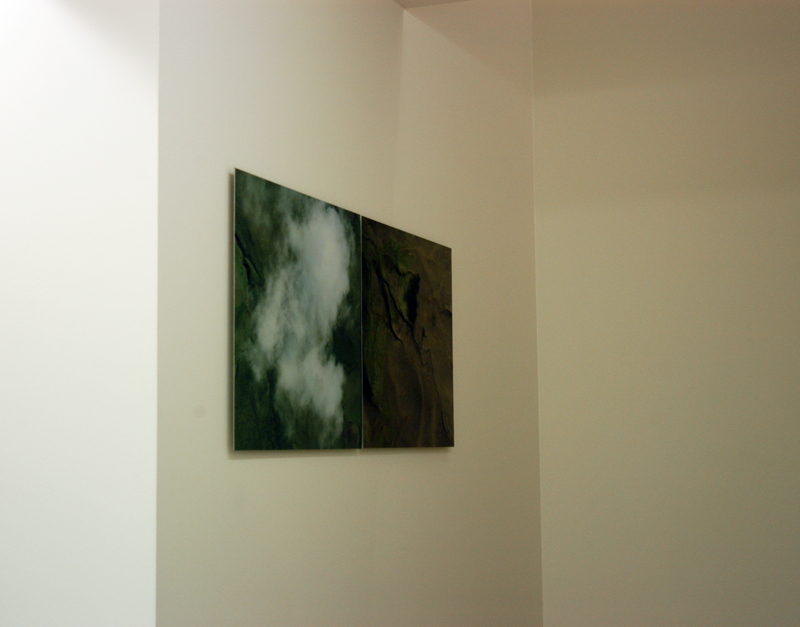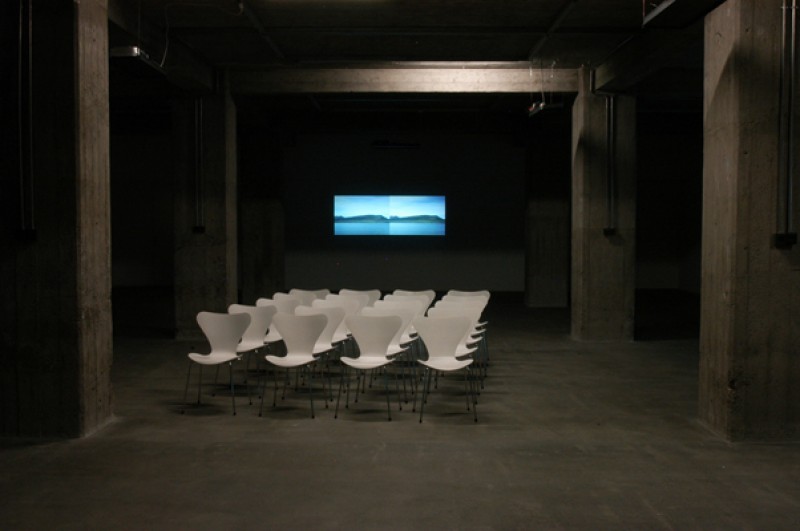


 The Reykjavík Municipal Theater: “Red brightly burns” by Heidar Sumarlidason
The Reykjavík Municipal Theater: “Red brightly burns” by Heidar Sumarlidason
Falið fylgi – The Akureyri Theater
Fokhelt, Breiðakur 17-19
In Deep Water – The Hafnarfjörður Centre of Culture and Fine Art
Fisherman’s Widow, Fisherman
Two side-by-side videos show the same perspective and are recorded simultaneously. The difference between them, however, is that one is taken straight up into the sky from land and the other out at sea, where the old man rocks the boat. The wind is an underlying element in the work where we see the clouds traveling in the sky and it carries the waves of the sea.
Summer Light, and then Comes the Night – The National Theater
Silence – Reykjavík Art museum
Seven photos of fish, taken with a Polaroid camera; the heads of the same seven fish in jars filled with formaldehyde; the invisible presence of their bodies locked in a freezer; the video images of the two hands that created the scene; the cross of a window frame leaning against the wall. In the middle of the installation there is a cloth lying on the floor were the fishes was slaughtered. The composition is open-ended.
Angur:blíða – Skaftfell – Center for Visual Art
Private exhibition – Gallery Nordlys – Denmark
Public work – The University of Iceland
Family exhibition – CIA gallery, Xiamen, China
Crouching
Privat exhibition – Gallery +
Privat exhibition – Gallery Populus Tremola
Privat exhibition – Gallery Banananas
Privat exhibition – Gallery 21 Malmö
Privat exhibition – I8 Gallery
From the beginning of his career Finnur Arnar Arnarson has been particularly drawn to generic circumstances where art is displayed in a volatile state, scarcely visible at the narrow margin between art and life. Taking advantage of unaesthetic, real-life situations, experienced in absence of artistic ambience, he excelled in drawing attention to neglected pores and corners where his art was fully integrated into a perfectly commonplace ensemble. In these initial works, in the early nineties, he used to reconstitute a given moment in a series of site specific works showing an unusual daring in furthering the limits of art.
Finnur Arnar´s double-edged approach appeared as early as his career and has ever since given his works an extra dimension of contradictory nature. They can be interpreted in a certain way but that does not necessarily prove that that is what they are about altogether. Behind an obvious denotation of a general kind lies a hidden connotation of a particular nature easily opposing that which seems so obvious, most often referring to art and artistic practice in a manner which emphasizes its unusual nature as a professional activity.
Although it may be harmless to leave a work unfinished in any other profession, an artists must not be caught off guard as an ordinary worker. Every move demands a perfection, which excludes absence on behalf of the technicians responsible for the exhibition. Yet, in all the anarchy which appears to reign throughout the exhibition the atmosphere is as if it were the artist´s solemn wish to eschew all the formal rules of a traditional exhibition bien faite. The comparison between an ordinary working place and the gallery turns into a conflicting and slightly melancholic envy of commonplace freedom, not that the upside down disorder would ever be considered better or more beautiful than the artistic orderliness, but because it is truer to life, where proper arrangement is inexistant. Unlike aesthetic orderliness which pleases the common eye uncouth chaos happens to be the artist´s neverending source of inspiration.
The speculation of time and experience resulting from Finnur Arnar´s discovery of the creative forces of natural and cultural disarray has found a place in recent video installations.With the advent of the video projection autobiographical sketches have become more frequent, although it would be erroneous to interpret them too literally. Despite the role he assumes as a male and father facing the contemporary crisis of masculinity, there are deeper and far more inveterate concerns in Finnur Arnar´s melancholic description of his hero´s daily existence.
There is ample reason to see in Finnur Arnar´s works from the new milennium the extension of the male crisis comprising the general crisis of nature, or rather man´s cultural crisis reflected in the global degradation of our natural environment. As his art evolves it becomes ever more evident how closely Finnur Arnar associates our dwindling spontaneity, perceptual frigidity and loss of innate boldness – all retreating instincts in contemporary culture – with man´s alienation from nature. It is a major feat of Finnur Arnar how through relatively simple means he has been able to rekindle the pertinence of Sigmund Freud´s lucid questioning of Civilization and its Discontent, from 1930, echoing Gauguin´s late masterpiece from 1897, Where Do We Come From? What Are We? Where Are We Heading?
Halldór Björn Runólfsson
I8 Gallery (downstairs) – Cloud and Shadow
Cloud and Shadow
Where Are We Heading?
Finnur Arnar´s double-edged approach appeared as early as his career and has ever since given his works an extra dimension of contradictory nature. They can be interpreted in a certain way but that does not necessarily prove that that is what they are about altogether. Behind an obvious denotation of a general kind lies a hidden connotation of a particular nature easily opposing that which seems so obvious, most often referring to art and artistic practice in a manner which emphasizes its unusual nature as a professional activity.
Although it may be harmless to leave a work unfinished in any other profession, an artists must not be caught off guard as an ordinary worker. Every move demands a perfection, which excludes absence on behalf of the technicians responsible for the exhibition. Yet, in all the anarchy which appears to reign throughout the exhibition the atmosphere is as if it were the artist´s solemn wish to eschew all the formal rules of a traditional exhibition bien faite. The comparison between an ordinary working place and the gallery turns into a conflicting and slightly melancholic envy of commonplace freedom, not that the upside down disorder would ever be considered better or more beautiful than the artistic orderliness, but because it is truer to life, where proper arrangement is inexistant. Unlike aesthetic orderliness which pleases the common eye uncouth chaos happens to be the artist´s neverending source of inspiration.
The speculation of time and experience resulting from Finnur Arnar´s discovery of the creative forces of natural and cultural disarray has found a place in recent video installations.With the advent of the video projection autobiographical sketches have become more frequent, although it would be erroneous to interpret them too literally. Despite the role he assumes as a male and father facing the contemporary crisis of masculinity, there are deeper and far more inveterate concerns in Finnur Arnar´s melancholic description of his hero´s daily existence.
There is ample reason to see in Finnur Arnar´s works from the new milennium the extension of the male crisis comprising the general crisis of nature, or rather man´s cultural crisis reflected in the global degradation of our natural environment. As his art evolves it becomes ever more evident how closely Finnur Arnar associates our dwindling spontaneity, perceptual frigidity and loss of innate boldness – all retreating instincts in contemporary culture – with man´s alienation from nature. It is a major feat of Finnur Arnar how through relatively simple means he has been able to rekindle the pertinence of Sigmund Freud´s lucid questioning of Civilization and its Discontent, from 1930, echoing Gauguin´s late masterpiece from 1897, Where Do We Come From? What Are We? Where Are We Heading?
Halldór Björn Runólfsson
Privat exhibition – Reykjavík Art museum
Two video segments, ten minutes each, side by side where the same fishing village in The West fjords is shown. The ocean is in the front and the village huddles in the background. Twenty minute recording is split in the middle, the first ten minutes on the left the remaining ten on the right. The last frame on the left is the first on the right. The work shows twenty minutes from a village in ten minutes. The work is in five parts called: Village 1, Village 2, Village 3, Village 4, Village 5.
